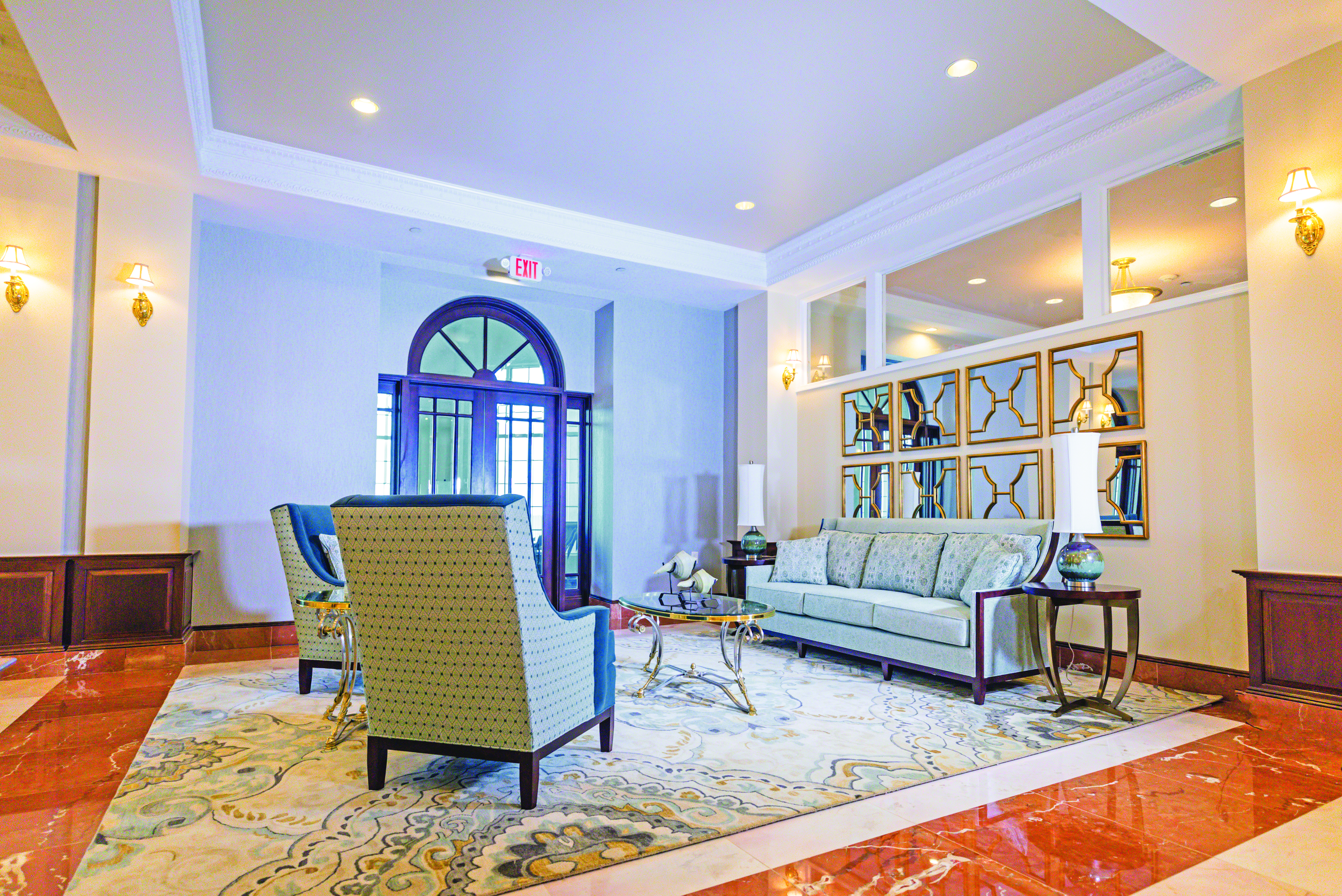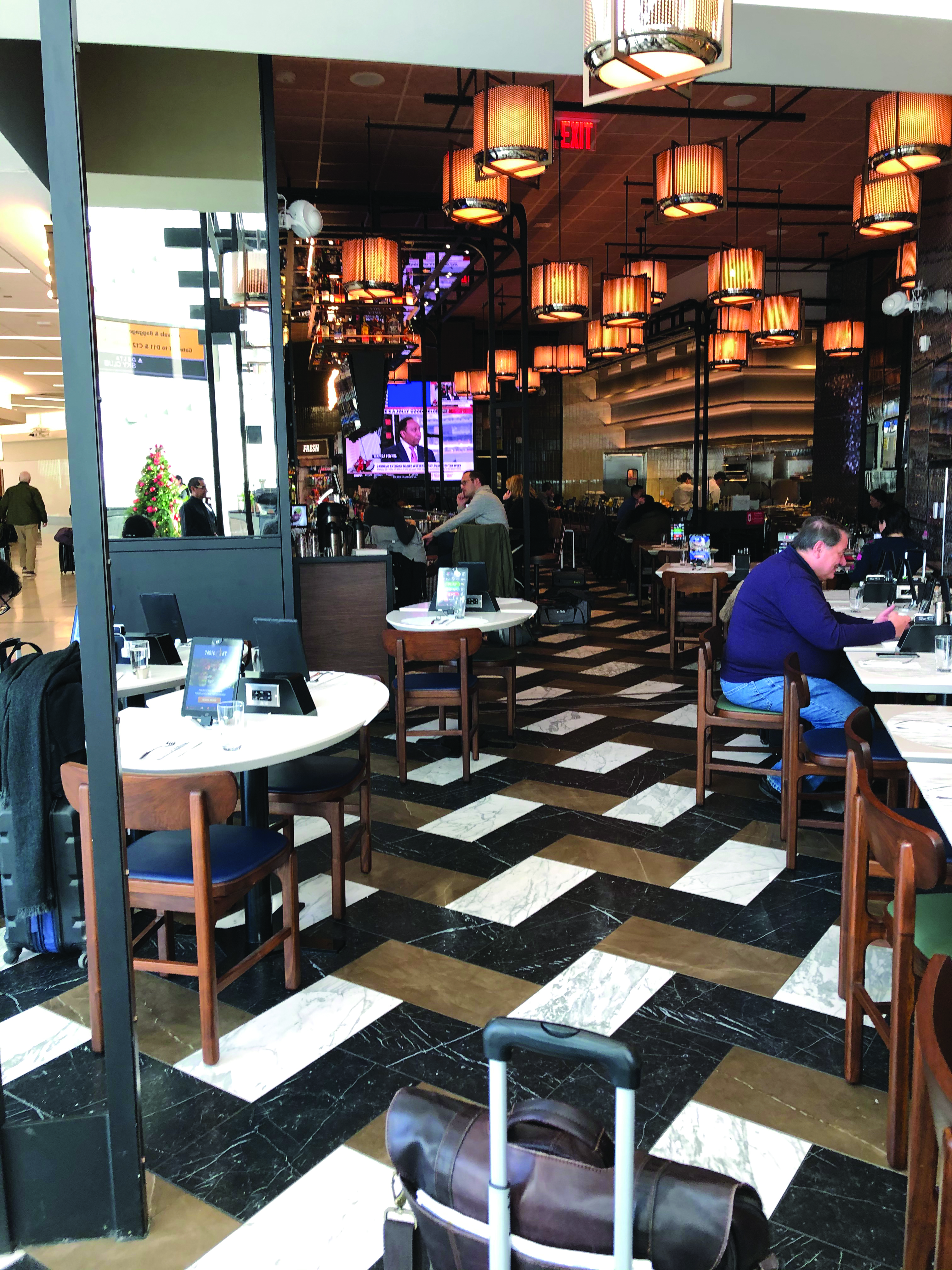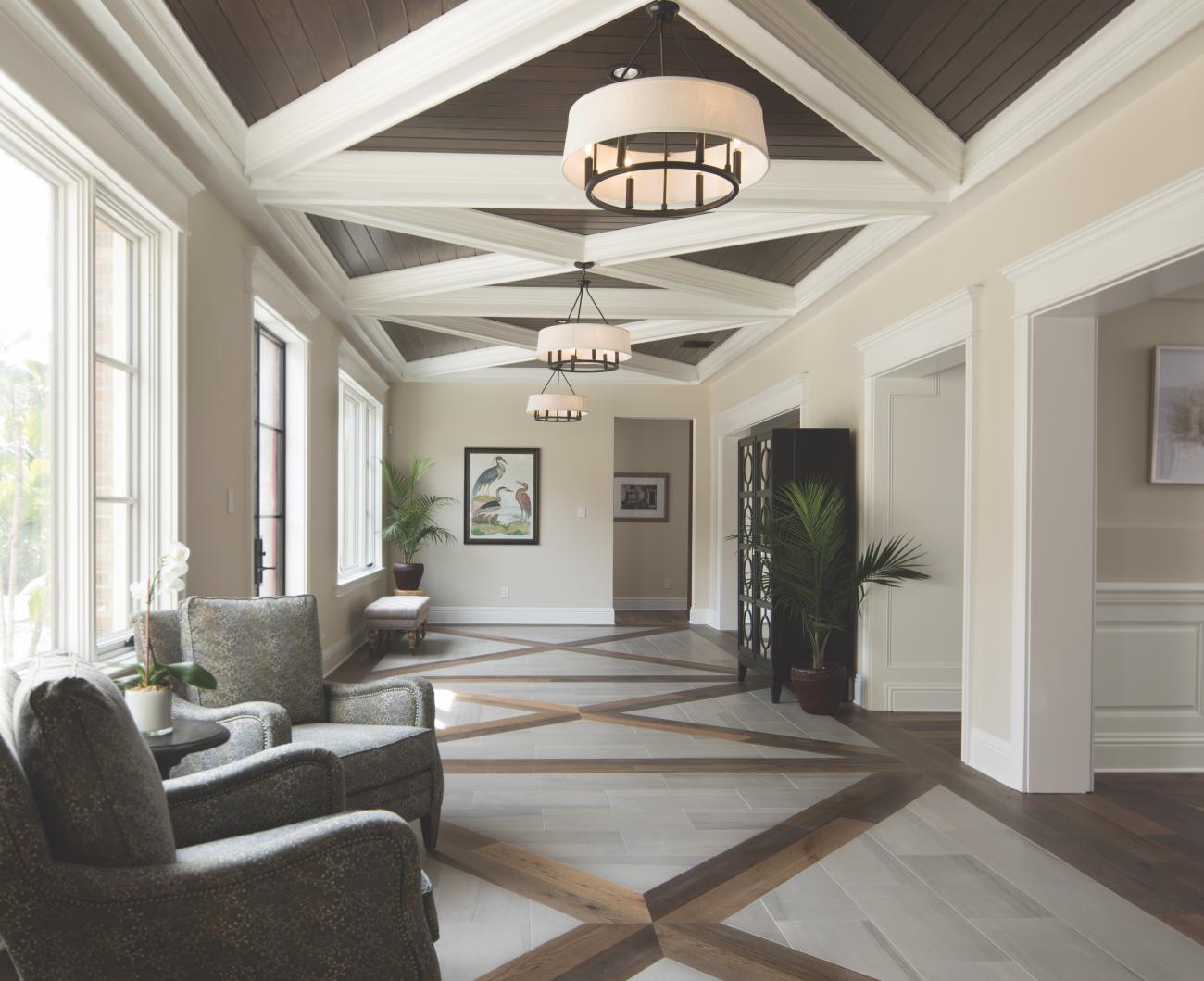For Carrie Fusella, Owner and Lead Designer at Design Alternatives, in Toms River, NJ, designing common spaces — hotel lobbies, restaurants and clubhouses — while lucrative and exciting, also present unique considerations that require attention.
Hospitality venues need to impress visitors from the moment they step through the door. According to a recent Wall Street Journal article, “Hotels want to dazzle guests during the first crucial 15 minutes of their stay.”
From the wow factor that visitors anticipate as they walk through the front door of a luxury hotel lobby to the flow of the space, the comfort of the seating and the durability of furniture that will be used over and over again in the course of a day or a dinner shift, designers and home furnishings manufacturers are tasked with creating beautiful spaces that function for the masses.
“How do you make performance look fabulous?” Fusella asks. Her answer? “A little drama, performance and function.” That performance and function, however, come with a wide variety of parameters to address for today’s consumer looking for an elevated experience: technology; sustainability, the comfort of home, community and warmth.


Performance Perspective
Whether waiting for a hotel room or sitting down to that luxe dinner, consumers are looking for a comfortable spot to park and interact. “In a common space, you have to be mindful of getting in and out of the chairs,” says Dean Jarrett, Vice President and General Manager of H Contract, the hospitality/contract division of Hooker Furniture. This is accomplished by tighter seat depths and higher seat heights. “You want chairs that help you sit more upright so you can get out of them more easily,” he continues.
“There needs to be an ease of getting in and out,” Fusella concurs, noting that when she chooses seating for a common area, she takes into consideration that the people who sit there may be older or may be children, factors that could require specific seating requirements. She adds that upholstered furniture also needs to look tailored, neat and clean for a long time. Fusella finds that hospitality spaces typically have a lifespan of seven years before needing to be refreshed, another consideration when choosing seating that needs to be durable enough to stand the test of time.
Quality matters. At H Contract, seating starts with dimensionally stable engineered hardwoods designed to stand up to the wear and tear in a setting for extended usage. “Once you have a strong foundation, you can add commercial grade upholstery materials and foam,” Jarrett continues. He adds that foam denser than what is typically used for residential seating is needed so furniture will hold its shape for a longer period of time.
“We really do pay attention to how things are constructed,” Fusella says, adding that attention is paid to the depth of seating pitch, how high the seat sits and more. “Most people [in these spaces] are traveling. You need to have furniture that is comfortable, functional and easy in, easy out. You can still have some really fun pieces though.”
Seating durability has been made easier with performance fabric technology advances as well, she continues.
Commercial-grade fabric today is durable enough to stand up to the traffic, moisture and stains that can come with crowds. “You can still maintain the aesthetic, particularly now, as the fabrics are fascinating in the looks they achieve,” Fusella adds.
She cautions that designers should work with manufacturers to develop a cohesive look in a space without everything having to match. Today’s fabric color and pattern options help to make that possible.
As performance fabrics have gotten better, too, prices have come down, making durable seating and other upholstery applications more affordable for a large project. Price-consciousness on any hospitality project needs to be taken into consideration, Fusella says. “There are a lot of charges and fees that go into [designing hospitality spaces]. Everyone wants everything at the best price.”
Drama and Convenience
While hotels, restaurants and other hospitality common spaces may want designers to source furnishings at modest price points, going back to “dazzling visitors in the first 15 minutes” requires an environment that is both comfortable and show-stopping. Drama can be achieved in multiple ways, according to designers and manufacturers, and it doesn’t always have to break the bank. Spending on one dramatic focal point — a custom light fixture, a high-end wallpaper along one wall, beautiful flooring — can bring the drama, while other elements in the space, while maintaining quality, can be more cost-conscious.
Common spaces in hospitality are trending toward more sleek, clean and modern furnishings, says H Contract’s Jarrett, in part as a necessity to create functionality and a clean look. A more casual approach to design in many of these settings works well too, he adds, positioning seating in “conversational pods,” for example, with a mix of chairs and loveseats surrounding an ottoman or round table. Multifunctionality is key in common spaces as well — a game table that can become a conference table in a community space or clubhouse, for example, adds Fusella.
She engages her clients to find out the best places for dramatic touches and where and how furnishings in a common space need to function. “Performance has to go hand in hand with the function and the ambience,” she notes. “A true hospitality space wants interest today.”
Interest, however, doesn’t have to be cost-prohibitive. While overscaled custom lighting is one option in a hospitality common space, it’s not entirely necessary when that custom option doesn’t fit the budget. “It’s quite interesting what you can do when you take standard pieces and couple them in different sizes and at different levels,” says Jennifer Kis, Director of Marketing Communications at Progress Lighting. The company recently outfitted the National Association of Home Builders’ New American Home with lighting throughout, and while a residential property, room scale required some creative attention to turn standard lighting fixtures into dramatic displays, which would work equally as well in a hospitality environment.

Lighting technology innovations — the ability to turn lights and fans on and off with a digital app, for example — are also adopted in hospitality spaces more easily. Today’s consumers are digitally connected and top conveniences they expect when traveling, according to Trivago, include being able to charge their phones whenever and wherever, as well as good WiFi connections.
Hubbell Wiring Device-Kellems, a sister company to Progress Lighting, has addressed this issue with introductions this year, including wall-mount wireless phone chargers and pop-up “drop zone” charging areas, providing seamless opportunities for common spaces to include phone charging capabilities in more places. “We get a lot of requests for this from hotels, schools and work zones in hospitals,” says Vic Flagello, Marketing Director at Hubbell. “I see this as a big growth area. Think about having a small phone charger, with a corded receptacle close by. You can charge more than one device, eat, and read your phone as it will be mounted in front of you and the center will be open so that you can scroll. I think doing a build-in to give personal charging space makes sense. Hotels lobbies and university common areas have the same need.”
Consumers continue to travel and gather in common spaces where they want to relax and take care of multiple tasks at once. When designing for these hospitality spaces, paying close attention to the function, performance and comfort of the furnishings and decor that guests first encounter can go a long way toward positive experiences and reviews.







